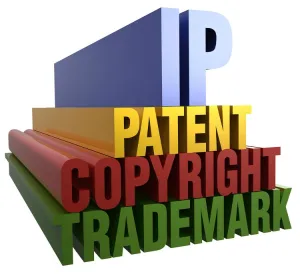Oral hearings before the United States Patent Trials and Appeals Board (“the Board”) ininter partes review proceedings are a relatively new phenomenon confronting patent attorneys. However, a number of best practices have already emerged for success in oral argument.
General Format and Procedure of Oral Argument
The oral hearings themselves resemble the format for an appellate oral argument. While the Board may receive live testimony or video deposition testimony at the hearing, permission to present such testimony has, to date, been rarely given. Therefore, in making the oral argument, the standard advice for any appellate oral argument applies. Be careful to listen to and respond to the question actually asked. Answer the question directly with “yes” or “no” whenever possible and then follow with further explanation if need be. You should remain polite but firm, and maintain your argument in a way that is respectful to the judges. Do not abandon key points in your argument simply because a judge asks a question that seems to be an attempt to extract concessions. Credibility is key and can be accrued with the judges if you are prepared to concede a “bad point” where it is a point that can be explained as not controlling. Many questions tend to be prefaced by outlining the opponent’s position and thus can be lengthy. Of course, it goes without saying to allow the judge to finish the complete question before attempting an answer.
Bear in mind that the hearings are transcribed by a court reporter who is generally unfamiliar with the specifics of the case. The court reporter may be hearing many of the highly technical terms of the claims or prior art for the first time. Therefore, it is important to maintain a steady pace of speaking for the court reporter and look at him or her occasionally to ensure you are being heard and understood. Points made during oral argument may be relied upon in an opinion and it is important that the transcript be accurate for any appeal.
Prior to the hearing, the sides can request their preferred length of time for oral argument. Generally, the amount of time provided by the Board depends upon the judges involved, complexity of technology or legal issues, the number of patent claims and amount of prior art. In usual cases the Board will grant each side forty-five minutes to an hour in which to present their case. The Petitioner is first to present its case, with the right to reserve some of its time for rebuttal to respond to Patent Owner’s presentation. A typical Petitioner might elect forty minutes for argument while reserving twenty minutes to respond to the Patent Owner.
In practice, the majority of time at the hearing may be spent explaining those points of the technology on which the judges wish to have their understanding clarified. This is particularly true for the Petitioner, who bears the legal burden of proof before the Board. For the Petitioner, rebuttal time may be spent further clarifying issues discussed during the initial presentation of its arguments, responding to specific points raised by opposing counsel or, of course, addressing questions from the Board. Rebuttal is not a time to make new arguments or summarize or re-state the earlier argument.
Planning for Oral Argument
For the Petitioner planning for oral argument should begin before the petition is filed, while for the Patent Owner it should begin before the Patent Owner Statement is filed. That is because new arguments at the oral hearing stage of an inter partes review are strictly forbidden. Attorneys should expect that if the judges consider an argument to be new, then the attorneys will be asked to provide a direct citation to where in the previously filed papers that the particular argument has been raised. The panel will be very prepared and ask highly technical questions regarding the subject matter at issue in the inter partes review. In particular, the panel will ask questions designed to press on any perceived technical weaknesses in either side’s case. Attorneys should have an excellent working knowledge of the science or technology contained within the references upon which the Board instituted the inter partes review. Attorneys should also be able to discuss the science or technology in the background art as well, if need be.
While much of the oral argument will be spent discussing the technology at issue and prior art, attorneys should also be prepared to provide case support for arguments on specific legal issues. Such legal issues include, for example, obviousness and whether there is a proper nexus between the claims at issue and alleged secondary considerations of obviousness. However, most panels will not typically spend their time discussing case law with the attorneys, but will rather concentrate on what they see as the key points in the technology before them.
It is extremely worthwhile to prepare an oral argument outline for a full presentation of the case before the panel. However, the primary benefit of this exercise is to ensure the attorney has a satisfactory knowledge of all aspects of the case. Once the oral hearing begins, it is very likely that questions will begin very shortly into the presentation. As a result, while it is important to be prepared to discuss any aspect of the case discussed in the papers filed in the inter partes review, the ability to be flexible in explaining particular points that the panel considers to be key is crucial. In particular, attorneys should be prepared to jump forward or backward to discuss key demonstratives illustrating the fundamental points, rather than be wedded to proceeding through the presentation of demonstratives in a strict order. Due to time discussing technical questions asked by the panel, it is quite likely that less than half of prepared demonstratives will be used during oral argument. This is particularly true of the Petitioner as more questions may be directed to the party bearing the burden of proof.
Demonstratives for Oral Argument
For the creation of demonstratives, the Board often recommends review of two notices issued in prior IPRs as guides: CBS Interactive Inc. v. Helferich Patent Licensing, LLC, IPR2013-00033 (PTAB Oct. 23, 2013) (Paper 118), and St. Jude Medical, Cardiology Div., Inc. v. The Board of Regents of the University of Michigan, IPR2013-00041 (PTAB Jan. 27, 2014) (Paper 65). Because of the strict prohibition against new arguments or evidence at oral argument, it is recommended that each demonstrative contains a cite to the place in the papers that have been filed where the information originally appeared. The presentations of each side must usually be served on the opposing side at least five business days before the oral hearing date. If there are any objections to the demonstratives prepared by either side, such objections usually must be raised at least two business days before the hearing date. In such a case, a telephone call with the Board may assist in resolving the objections. A slide projector for demonstratives can be requested before the oral hearing, which the U.S.P.T.O. may then provide with a VGA connection for connection to the attorney’s laptop.
Arrive Early and Bring Passport
An additional wrinkle that some attorneys should be aware of is that the U.S.P.T.O. has instituted a “real I.D.” program for security purposes, which means that driving licenses from certain states (including New York, amongst others) are not acceptable as identification. Attorneys who routinely use their New York driving license as identification should bring their passport instead. It is worth checking online before going to the oral hearing to make sure that your state is not one of those affected by the “real I.D.” scheme. The current list of such states may be found at http://www.dhs.gov/real-id-enforcement-brief.
Conclusion
Succeeding at oral hearings before the Board in inter partes review requires the kind of preparation that usually precedes an appellate oral argument combined with a thorough knowledge of the technology, claims and prior art at issue. In addition, well-designed demonstratives that are properly sourced to the filed papers and which the attorney can use to effectively explain key arguments to the panel also play a significant role. By following these best practices, attorneys who are called to argue before the Board are more likely to succeed in clarifying the essential points of their case to the panel.





 />i
/>i

